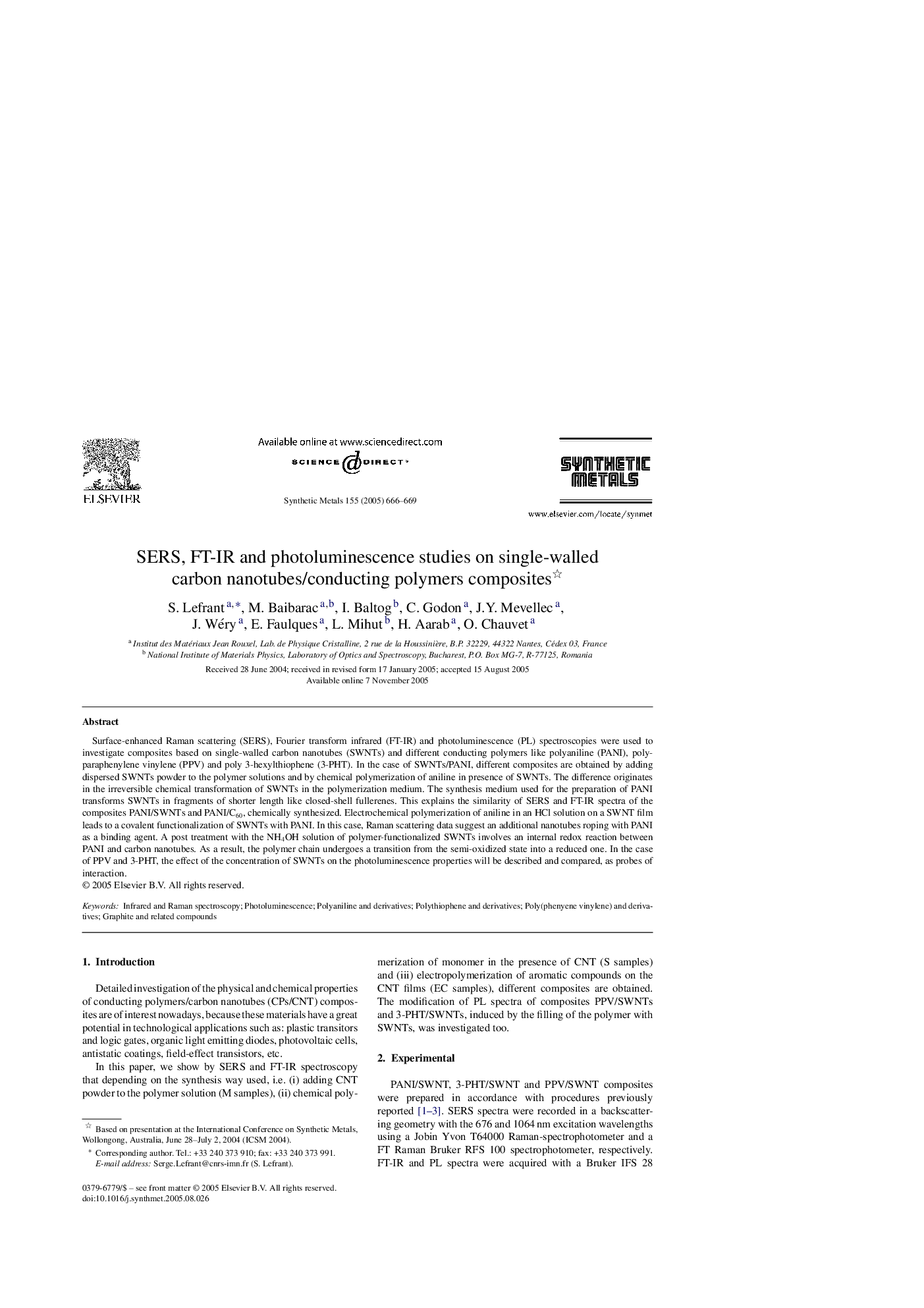| Article ID | Journal | Published Year | Pages | File Type |
|---|---|---|---|---|
| 10619081 | Synthetic Metals | 2005 | 4 Pages |
Abstract
Surface-enhanced Raman scattering (SERS), Fourier transform infrared (FT-IR) and photoluminescence (PL) spectroscopies were used to investigate composites based on single-walled carbon nanotubes (SWNTs) and different conducting polymers like polyaniline (PANI), poly-paraphenylene vinylene (PPV) and poly 3-hexylthiophene (3-PHT). In the case of SWNTs/PANI, different composites are obtained by adding dispersed SWNTs powder to the polymer solutions and by chemical polymerization of aniline in presence of SWNTs. The difference originates in the irreversible chemical transformation of SWNTs in the polymerization medium. The synthesis medium used for the preparation of PANI transforms SWNTs in fragments of shorter length like closed-shell fullerenes. This explains the similarity of SERS and FT-IR spectra of the composites PANI/SWNTs and PANI/C60, chemically synthesized. Electrochemical polymerization of aniline in an HCl solution on a SWNT film leads to a covalent functionalization of SWNTs with PANI. In this case, Raman scattering data suggest an additional nanotubes roping with PANI as a binding agent. A post treatment with the NH4OH solution of polymer-functionalized SWNTs involves an internal redox reaction between PANI and carbon nanotubes. As a result, the polymer chain undergoes a transition from the semi-oxidized state into a reduced one. In the case of PPV and 3-PHT, the effect of the concentration of SWNTs on the photoluminescence properties will be described and compared, as probes of interaction.
Keywords
Related Topics
Physical Sciences and Engineering
Materials Science
Biomaterials
Authors
S. Lefrant, M. Baibarac, I. Baltog, C. Godon, J.Y. Mevellec, J. Wéry, E. Faulques, L. Mihut, H. Aarab, O. Chauvet,
